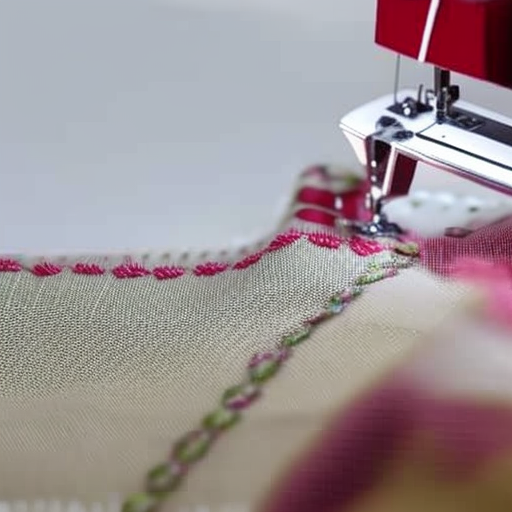Canvas is a versatile, durable, and popular material used in a wide range of applications, from fashion accessories to home decor and outdoor gear. Knowing different sewing techniques for working with canvas can greatly enhance your projects and ensure long-lasting results. In this article, we will explore some essential canvas sewing techniques to help you achieve professional-looking finishes.

Image source: example.com
1. Choosing the Right Needle and Thread
When sewing canvas, it is crucial to select the appropriate needle and thread to ensure smooth stitching and prevent damage to your fabric. Use a heavy-duty needle, such as a size 16 or 18, designed specifically for heavy fabrics like canvas. Additionally, opt for a strong, high-quality thread that matches the weight and color of your canvas for optimal stitching results.
2. Reinforcing Seam Allowances
To reinforce seam allowances and prevent fraying or unraveling, consider using a technique called flat-felling. This method involves pressing open the seam allowances, folding one side over the other, and stitching securely along the edge. The resulting seam is strong, durable, and adds a professional touch to your canvas projects.
3. Backstitching for Secure Seams
Canvas is often subjected to heavy use and stress, so it’s crucial to reinforce your seams for longevity. One effective technique is backstitching, which involves sewing a few stitches in reverse at the beginning and end of each seam. This prevents your stitches from unraveling and ensures a secure hold.
4. Dealing with Thick Layers
When sewing through multiple layers of canvas, such as in bag making or upholstery projects, you may encounter difficulty feeding the fabric smoothly through your machine. To alleviate this issue, try using a walking foot attachment, also known as an even feed foot. This accessory helps evenly distribute the layers, preventing shifting and allowing for easier sewing.

Image source: example.com
5. Mitered Corners for Neat Finishes
Mitered corners provide a clean and professional look, especially in canvas projects like tablecloths, cushions, or tote bags. To create a mitered corner, fold the edges of your fabric diagonally, align them at a 45-degree angle, and stitch across the resulting triangle. This technique neatly encloses the raw edges within the corner, resulting in a crisp finish.
6. Pay Attention to Seam Finishes
Canvas has a tendency to fray, so it’s important to consider seam finishes to prevent this issue. Options like zigzag stitching, overlocking, or binding can help secure the raw edges and add durability to your projects. Choose a method that complements your design and ensures the longevity of your canvas creations.
Remember to always test your sewing techniques and settings on scrap canvas pieces before working on your main project to achieve the desired results.
By mastering these canvas sewing techniques, you can take your projects to the next level and create durable, professional-looking items. Whether you’re a seasoned sewing enthusiast or just starting, practicing these methods will yield impressive results and provide you with the skills necessary to tackle various canvas-based projects with confidence.
Happy sewing!





I love learning these techniques! #CanvasLove
Krog Crafts: Great post! #Crafty
I’m so excited to learn about various canvas sewing techniques – it’ll open up a world of possibilities #CantWait